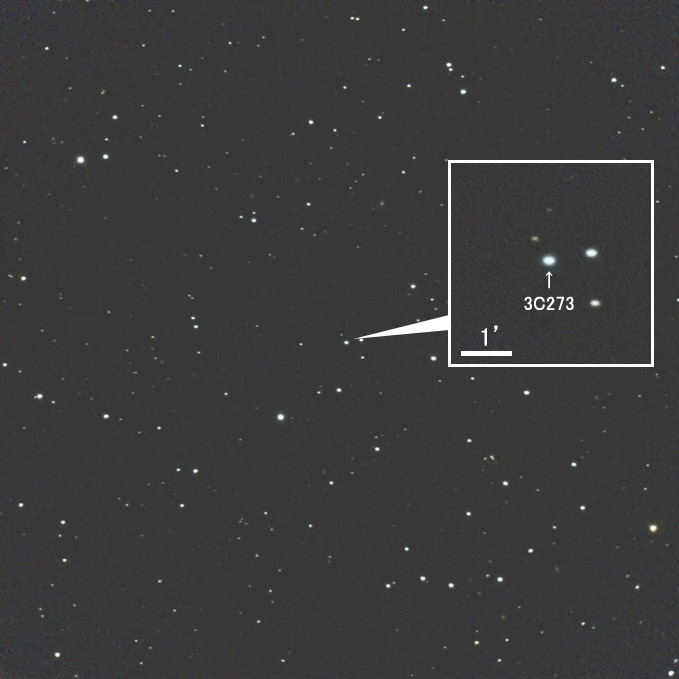| QSO 3C273 / Quasar |
|---|
| R.A. | 12h 29m 6.9s (2000.0) |
|---|
| Dec. | +02° 03' 07" (2000.0) |
|---|
| Apparent Size | less than 20" |
|---|
| Red Shift | 0.158 |
|---|
| Magnitude | 12.8 |
|---|
| Distance | about 2.0 billion light yrs. * |
|---|
| Group of Galaxies | - |
|---|
| Other IDs | PGC41121 |
|---|
* Rough value calculated under supposing
the Hubble constant H0=70 km s-1 Mpc-1
|
I'd like to show you probably one of most distant objects can be captured with amateur telescopes.
This field shows you around north west of gamma Vir, Porrima, which is one of most beautiful double stars in spring skies.
An arrow indicates a deep-deep sky object of the "Quasar (QSO)". This word is an abbreviation of the "Quasi-stellar object".
Almost all of quasars show the red shift over 90% of light velocity; this fact tells us that quasars must be over some billions light years away.
The quasar "3C273" was discovered at the first time and has a visual magnitude of 12.8, it's the brightest in all quasars.
Distance from the Galaxy is estimated about 2.5 billion light years.
It's considered that quasars are emitting gigantic energy because they're extremely bright in spite of their stupendous distance.
Their quantities of emitting energy is imagined about some thousands or some ten thousands times of that of whole of our Galaxy.
Some astronomers have proposed that they may be "eggs" of very active galaxies formed in the early of universe's history.
But we don't know what they really are yet, one of greatest mysteries in contemporary astronomy.
⇒ Display the spectral profile of 3C273 (in new window)
|

